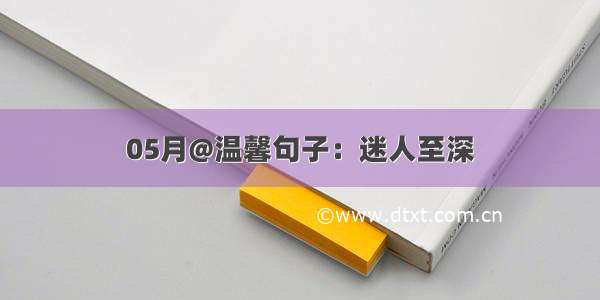
1. 形容词和副词的作用和位置
形容词是用来修饰名词的,常被放在名词前作定语,或放在系动词后面作表语。而副词则用来修饰形容词、动词、其他副词或者句子,一般位于形容词之前,动词之后或句子之首。以下属几种特殊情况,须记:
(1)形容词短语作定语,定语后置。
如:a language difficult to master, a leaning tower about 180 feet high
(2)表语形容词(afraid, alike, alone, asleep, awake, alive等)作定语,定语后置。
如:a man alive。
有些表身体健康状况的形容词如well, faint, ill只作表语。sick既可作表语又可作定语, ill如果不是表示身体或精神上“不适的”、“不健康的”“、“有病的”等,而是表示类似“bad(不好的)”的意思,则通常只作定语。
(3)形容词用作定语,修饰由不定代词one, no, any, some和every构成的复合词如anything, something等时,通常后置。
如: I have something important to tell you.
(4) else作定语修饰疑问代词和不定代词时,需后置。
(5) enough, nearby修饰名词时前置或后置;
程度副词一般位于形容词、副词前面, 但enough修饰形容词、副词时,必须后置。
(6)几个副词并列作状语时,其顺序较灵活,但一般是:方式→地点→时间。
如:We had a good time together outdoors last Sunday.
(7)频度副词如often, always, usually等在be动词后,行为动词前。
(8)副词作定语时,定语后置。
如:The person there is waiting for you.
(9)几个并列的形容词作定语时,其语序通常为:限定语(The, A) +描绘性形容词+ size (大小) + shape (形状) + age (年龄、时间) + color (颜色) + origin (国籍、来源) + material (材料) + purpose(目的)+ 名词
如:a heavy black Chinese steel umbrella, the man"s first interesting little red French oil paitings
2. 以-ly结尾的词性辨析
(1) 大部分形容词加-ly可构成副词,下列单词以-ly结尾,但却是形容词而非副词: lively, lonely, lovely, deadly, friendly, ugly, silly. likely, brotherly, timely等。
(2) 有些以-ly结尾既为形容词,也为副词,如daily, weekly, monthly, yearly, early等。例如:
The Times is a weekly paper.
The Times is published weekly.
(3)兼有两种形式的副词(有或无-ly)
deep深 deeply深入地
wide宽广widely广泛地
low位置低lowly地位卑微
high高highly高度地
dead完全,绝对be dead asleep
deadly非常be deadly tired
pretty相当be pretty certain that...
prettily漂亮地be prettily dressed
close近 Don"t sit close.
closely密切地 Watch closely!
late晚、迟 arrive late, come late
lately最近I haven"t seen him lately (recently) .
free 免费 You can eat free in my restaurant whenever you like.
freely 无限制地 You may ask freely; say what you like.
3. 复合形容词的构成
(1)形容词+名词+ed
kind-hearted好心的, white-haired白发的
(2)形容词+形容词
red-hot炽热的, dark-blue深蓝的
(3)形容词+现在分词
good-looking好看的, easy-going随和的
(4)副i+现在分词
hard-working勤劳的, fast-moving快速转动的
(5)副词+过去分词
hard-won得来不易的, newly-made新建的
(6)名词+形容词
life-long终生的, world-famous世界闻名的
(7)名词+现在分词
peace-loving爱好和平的, fun-loving爱开玩笑的
(8)名词+过去分词
snow-covered白雪覆盖的, hand-made手工的
(9)数词+名词+ed
four-storeyed 4层楼的, three-legged 3条腿的
(10)数词+名词(名词用单数)ten-year 10年的,two-man两人的
4. 形容词和副词的比较等级
(1)平级比较
as+原级adj./adv.+as. 和...一样。
not as/so+原级adj./adv. +as... 不如...
John plays football as well as, if not better than, David.
It is generally believed that teaching is as much an art as it is a science.
As far as I know, the work is not as difficult as you expect.
(2) "the+比较级..., the+比较级...."表示“越…,越...”
The more careful you are, the fewer mistakes you will make.
(3) the+比较级+of the two+名词,表示“两个中较...的”。
-Of the two bags, which one do you prefer?
-The bigger one. It"s a most beautiful one, I think.
(4) “否定式谓语+比较级”有最高级的含义
Your story is perfect; I"ve never heard a better one before.
(5) 用the last 表示“最不可能的”、"最不适合的”、“最不希望的”等。
The last thing I want to do is to offend you.
(6) 几种带有否定词的比较句型
The patient is no better than he was yesterday.
A whale is no more a fish than a horse is.
The technique of writing is no less difficult than that of the other arts.
(7)不与其他事物相比,表示本身程度的改变时,用“比较级+ and+比较级"的结构。
如: The weather is getting colder and colder.
The girl becomes more and more beautiful.
(8)某些以-ior结尾的形容词进行比较时,用to代替than。
这些词有inferior (劣等的、次的),superior (较好的、优于...),junior (资历较浅的),senior (资格较老的),prior (在... 之前)等。
He is superior to Mr.Zhang in chemistry.
(9)在比较从句中为了避免重复,通常用that(those), one(ones)代替前面出现的名词。that指物,one既可指人又可指物。that可代替可数名词单数和不可数名词,而one只能代替可数名词。
The book on the table is more interesting than that(或the one)on the desk.
A box made of steel is stronger than one made of wood.
(10)比较级的修饰语
能修饰比较级的修饰语有a lot, a little, a bit, a great deal, much, even, any, still, no, rather, far, by far等。另外,还有基础词、百分数、分数。
注意:不用very, so, too, quite等词修饰比较级。
Thistaskisabitharderthanthatone.
She is much cleverer than me.
That boy bought far more books than I.
---Are you feeling any better today?
---Yes, I feel much/a great deal better today.
5. 不以“人”作主语的形容词
下列形容词作表语时,通常不用“人”作主语。它们是possible,impossible,probable,necessary,convenient,inconvenient。它们的主语一般是“it”,指代后面的非谓语结构或that引导的主语从句。
6. 倍数的表达句型
表示“比...多(大)几倍”时,用“倍数+as...as”结构或“倍数+比较级+than...”表示,具体有以下几种句型:
A is three/four... times the size/height/length/weight/width/amount... of B
A is three/four... times as big/high/long... as B
A is three/four... times bigger/higher/longer... than B
A is + 倍数 + as much + 不可数名词 + as B
A is + 倍数 + as many + 可数名词 + as B
用times表倍数通常用于三倍以上,两倍可以用twice或double。
The new building is four times the size/the height of the old one.
Asia is four times as large as Europe.
Your school is three times bigger than ours.
This book costs twice as much as that one.
The university is four times as big as it was in 1980. (=The university is three times bigger that it was in 1980.)
7. 形容词(短语)作状语
形容词(短语)作状语时,通常说明主语的情况,即表示主语的状态、性质、特征等,可表示动作或状态发生的原因、方式、时间等,或对谓语作补充说明。有时它和宾语关于密切,且可位于句首、句末或句子中间,通常和句子的其他部分用逗号分开,但单个形容词可以连在一起。
(1)表示原因,但原因意义不很突出,有时是并列的。
Curious, we looked around for other guests.
Eager to see the sunrise, they got up at four.
Anxious for a quick decision, our leader called for a vote.
Unhappy with the result, he returned to work.
(2)表示方式或结果。
He came back, safe and sound.
The man was lying on the ground, dead.
He came back home, tired and hungry.
I went to bed hungry.
He lay in bed, awake.
8. 用形容词表示类别和整体
(1) 某些形容词加上定冠词可以泛指一类人,与谓语动词的复数连接,如:
The poor are losing hope.
(2) 有关国家和民族的形容词加定冠词指这个民族的整体,与动词的复数连用,如:
The English have wonderful sense of humor.
9. 常考形容词
ashamed惭愧的
accurate精确的
(un) acceptable(不)可接受的
accessible 容易得到的;可进入的
amusing好玩的,逗的
amazing令人惊异的
attractive有吸引力的
annoying讨厌的,烦人的
anxious担心的;急切的
brilliant 聪明的
brief简略的
casual随意的,漫不经心的
complicated复杂的
curious好奇的
delighted高兴的,愉快的
discouraged使丧气的
determined坚决的,坚定的
energetic精力充沛的
extraordinary非同寻常的
generous慷慨的
instructive指导性的,指示性的
independent独立的
infrequent不经常的
instant立即的
impatient不耐心的
modest谦虚的
negative否定的,负面的
potential潜在的
promising有前途的
restrictive限制的
ridiculous荒谬的
respectable值得尊敬的
scientific科学的
stressful 有压力的
technological技术的
troublesome麻烦的,捣蛋的
urgent紧急的
unconcerned不关心的
worthless没用的
violent暴力的;猛烈的
10. 常考副词
absolutely当然地
automatically 自动地
aimlessly 漫无目的地
conveniently方便地
continuously持续地
cheerfully高兴地
equally平等地
eventually最终地
especially尤其
generally 大体地,广泛地
naturally自然地
merely极少地;仅仅
personally个人地
regretfully后悔地
smoothly舒畅地;流利地
surprisingly惊奇地
unfortunately不幸的
















![[05月]废渣 waste residue英语短句 例句大全](https://mip.dtxt.com.cn/uploadfile/img/2024/05/28/83ff4eac5ed3aa9a12b27c3867b115bc.jpg)
![[2024年]荧光各向异性 fluorescence anisotropy英语短句 例句大全](https://mip.dtxt.com.cn/uploadfile/img/2024/05/28/d1748611438d1b570f23c60f26152912.jpg)